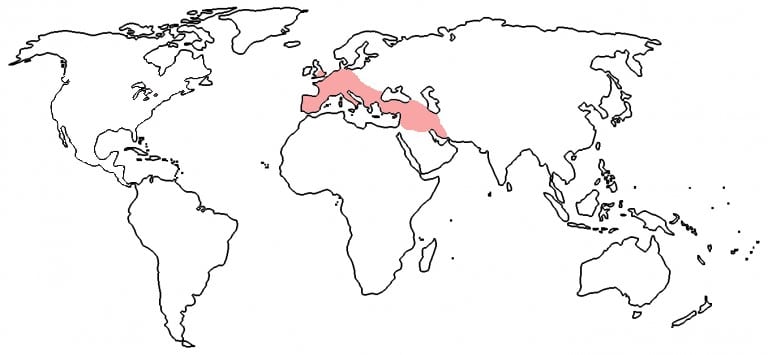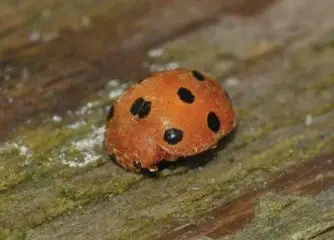Variations:

image source: coleptera.org
Taxonomy
Polyphaga > Cucujoidea > Coccinellidae > Henosepilachna > Henosepilachna argus
General Information / Features:
- Phytophagous ladybird, feeding on bryony plants and the leaves of cucurbitaceous plants
- Adults are orange in color with eleven black spots
- It measures 5-7mm in size
- The pronotum is orange in color
- Mostly found in South West Asia, Europe, and the UK.
- Bryony ladybirds overwinter in low herbage.
The Henosepilachna argus also has a common name which is – Bryony ladybird. Other known names are the Gourd Ladybird or the Melon ladybird.
Physical Attributes
Average length – 5-7mm.
Main body color – Orange
Pattern color – 11 black spots
Pattern fusions – Very Rare
Other colors – no
Pronotum – Orange, same as the body
Leg color – Orange, same as the body
Other features – The elytra are mostly covered in short downy hairs, this is rare for most Ladybugs. The spots are also smaller than the average-sized spots found on Ladybugs.
Also, the shape of this Ladybug can seem slightly more oval than round, almost diamond shaped as it can appear to end at a more angular point toward the rear of the Elytra.
Fourth-instar larva: Henosepilachna argus Larva’s body is pale in color, almost yellow with dark-colored tubercles, and it has numerous tall black spine-like branches.
Pupa: Pale yellow coloring with small black spots; partially covered over by the previously shed larval skin at the base of the Pupa – as per most Ladybug Pupa.
Habitats
Given the food source for the Henosepilachna argus, Bryony Ladybug, it is most likely to be found in backyards, gardens, and around crops.
However, sightings do include numerous other locations including fields, woodland, and shrubs.
Mostly native to south and west Asia, the Bryony Ladybird has been found as far west as southern parts of the United Kingdom.
Author:
Geoffory in Fourcroy, 1762
Approx Size:
It measures 5-7mm in size
Food Source:
Bryony Ladybird Beetle Feeds on the leaves of white bryony and other cucurbits plants.
These include the leaves of plants like melons, gourds, cucumbers (squirting Cucumbers), marrows and pumpkins, and white bryony in the wild.
It is not believed to feed on the plants themselves, just the leaves of these plants, however, this is yet to be confirmed.
Location:

Henosepilachna argus – Bryony Ladybird Coverage
- Request an Edit, or Update to this Information
- Submit an Image and location
- Related Article:
- Related Resource:
Information Compiled By Victoria Yange BSc in Natural Sciences and Pamela-Anne
All Content Copywrite Protected except where the source is specified – Link Only


